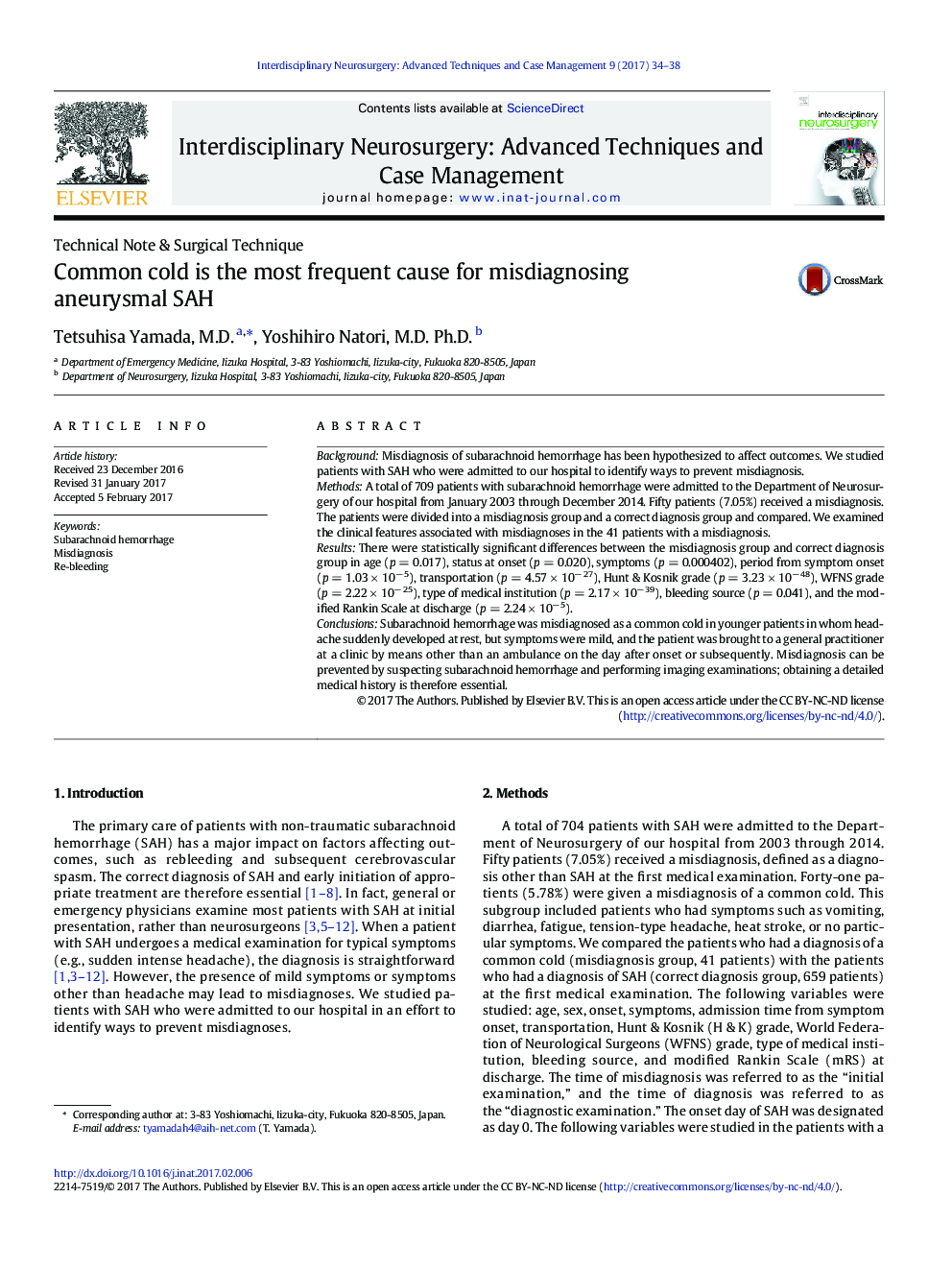| Article ID | Journal | Published Year | Pages | File Type |
|---|---|---|---|---|
| 5629443 | Interdisciplinary Neurosurgery | 2017 | 5 Pages |
â¢Misdiagnosis of subarachnoid hemorrhage has been hypothesized to affect outcomes.â¢Forty-one patients (5.87%) received a misdiagnosis.â¢The patients were divided into a misdiagnosis group and a correct diagnosis group and compared.â¢Subarachnoid hemorrhage was misdiagnosed as a common cold in younger patients.â¢Patient's headache suddenly developed at rest, but symptoms were mild.â¢Patient was brought to a general practitioner at a clinic not by an ambulance on the day after onset or subsequently.
BackgroundMisdiagnosis of subarachnoid hemorrhage has been hypothesized to affect outcomes. We studied patients with SAH who were admitted to our hospital to identify ways to prevent misdiagnosis.MethodsA total of 709 patients with subarachnoid hemorrhage were admitted to the Department of Neurosurgery of our hospital from January 2003 through December 2014. Fifty patients (7.05%) received a misdiagnosis. The patients were divided into a misdiagnosis group and a correct diagnosis group and compared. We examined the clinical features associated with misdiagnoses in the 41 patients with a misdiagnosis.ResultsThere were statistically significant differences between the misdiagnosis group and correct diagnosis group in age (p = 0.017), status at onset (p = 0.020), symptoms (p = 0.000402), period from symptom onset (p = 1.03 Ã 10â 5), transportation (p = 4.57 Ã 10â 27), Hunt & Kosnik grade (p = 3.23 Ã 10â 48), WFNS grade (p = 2.22 Ã 10â 25), type of medical institution (p = 2.17 Ã 10â 39), bleeding source (p = 0.041), and the modified Rankin Scale at discharge (p = 2.24 Ã 10â 5).ConclusionsSubarachnoid hemorrhage was misdiagnosed as a common cold in younger patients in whom headache suddenly developed at rest, but symptoms were mild, and the patient was brought to a general practitioner at a clinic by means other than an ambulance on the day after onset or subsequently. Misdiagnosis can be prevented by suspecting subarachnoid hemorrhage and performing imaging examinations; obtaining a detailed medical history is therefore essential.
